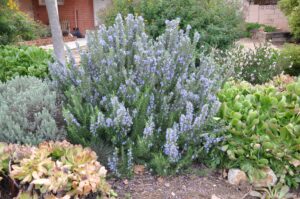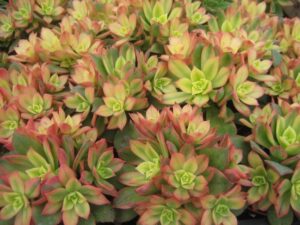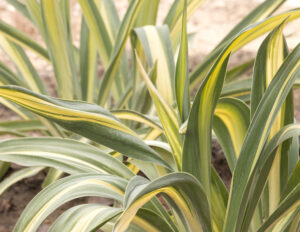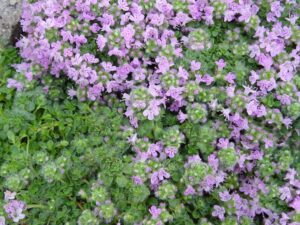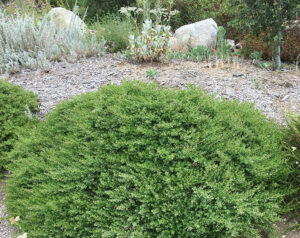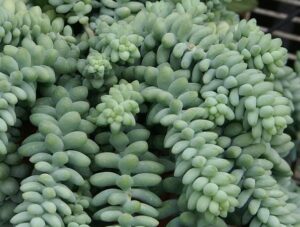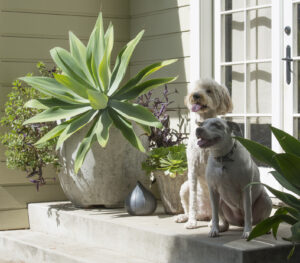 If you have furry friends at home, it’s important to consider them when planting your landscape. Although you should consult online, such as with sites like this, to see if your plants of interest are safe for your particular family pet, or the specific amount that can be ingested, here are a few to consider:
If you have furry friends at home, it’s important to consider them when planting your landscape. Although you should consult online, such as with sites like this, to see if your plants of interest are safe for your particular family pet, or the specific amount that can be ingested, here are a few to consider:
Rosmarinus officinalis tuscan blue / Tuscan Blue Rosemary
Hardiness Zones: 7 to 11
A blue burst of color that may be a great choice for your pets too! Enjoy the soft scent of rosemary as you and your pet spend time in the yard.
Aeonium kiwi / Kiwi Aeonium
Hardiness Zones: 9b to 12b
These sweet succulents add a gradient of color to your yard. Safe for your pets, and a safer choice for the planet, being drought tolerant, Aeonium kiwi is a perfect pick.
Salvia ‘Wendy’s wish’ / Wendy’s Wish Sage
Hardiness Zones: 9a to 10a
Sage may be a great option for your pets, adding a soft scent to air. As always, double check to see that this plant will be safe for your particular animal.
Beschorneria yuccoides `Flamingo Glow`/ Flamingo Glow Amole
Hardiness Zones: 6 to 11
These stripy strands of green and yellow create pattern in the yard. Long leaves bend and flow like ribbons amongst the other minute buddings. Although it appears spiky, the leaves are flexible and tips are not particularly sharp.
Thymus serpyllum / Elfin thyme
Hardiness Zones: 2 to 9
As a lovely ground cover in small areas, such as between stepping stones, Thymus serpyllum is a great option to add small dots of color.
Baccharis pilularis ‘Pigeon Point’ / Dwarf Coyote Bush
Hardiness Zones: 7 to 10
This lush plant is a lovely lawn replacement. Tiny buds of green look wonderful amidst nearly any other plant.
Sedum morganianum / Burro’s Tail
Hardiness Zones: 10 to 11
Another drought tolerant option, this plant, layered with grander or even daintier plants, adds wonderful texture to a space for animals to sniff and crawl.
In addition to plant choices, you may want to consider what’s pet-friendly when it comes to your hardscape as well. Certain gravel, for instance, can get stuck in your pet’s paws, and larger pebbles may not be good for an animal that loves to eat everything. Consider your pet’s habits to create a safe and comfortable space for the whole family.

